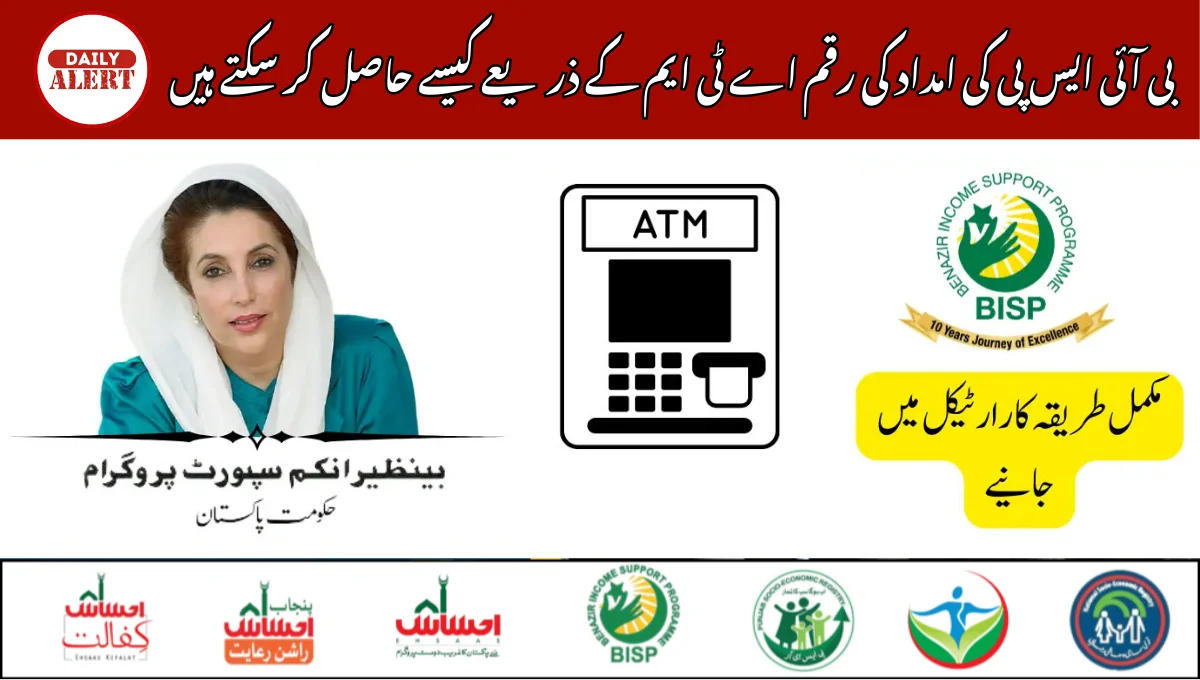The Benazir Income Support Programme (BISP), Pakistan’s largest social welfare initiative, continues to provide crucial financial assistance to millions of families in 2025. With digital banking becoming more widespread, the government has made it easier for beneficiaries to withdraw their payments through Automated Teller Machines (ATMs). Many citizens, however, still find the process confusing or intimidating. This guide explains step by step how to withdraw BISP payments from ATMs, what changes have been introduced in 2025, and what beneficiaries should know before accessing their funds.
BISP and the move toward digital banking
Launched in 2008, the Benazir Income Support Programme aims to provide financial relief to low-income households across Pakistan. Over the years, the program has expanded with new features, including conditional cash transfers, educational stipends, and specialized assistance for women. In recent years, the government has pushed for a shift toward digital financial services, encouraging beneficiaries to use ATMs and biometric verification systems instead of relying solely on physical cash distribution points.
This shift is part of Pakistan’s broader financial inclusion strategy. It reduces the risk of corruption, ensures timely payments, and empowers women by allowing them direct access to their stipends. By 2025, most BISP beneficiaries are expected to withdraw their payments using ATMs linked to designated partner banks.
Step-by-step process for withdrawing BISP funds at ATMs
Beneficiaries can withdraw their stipends through ATMs of banks partnered with BISP, such as Habib Bank Limited (HBL) and Bank Alfalah. The process involves biometric verification to ensure transparency and security. Here is how the system works in 2025:
First, the beneficiary inserts the BISP card or uses their Computerized National Identity Card (CNIC) at the ATM. The machine prompts for biometric verification, requiring a thumbprint scan to confirm identity. Once verified, the user selects the option for BISP payment withdrawal from the ATM menu. The screen then shows the available balance, and the beneficiary can withdraw the desired amount within the allocated payment limit. Finally, the machine dispenses cash and provides a printed receipt for record-keeping.
This process is straightforward, but beneficiaries should note that fingerprints must match the data stored in the National Database and Registration Authority (NADRA) system. In case of repeated verification failure, payments cannot be withdrawn from the ATM and must be collected through alternative arrangements provided by BISP offices.
Challenges faced by beneficiaries in 2025
Despite improvements, several challenges remain. Many rural beneficiaries struggle with limited access to ATMs due to poor infrastructure. Long queues are often reported in cities during payment release dates, creating difficulties for women and the elderly. Technical errors, such as machine downtime or failed biometric scans, also create frustration.
The government has introduced awareness campaigns to educate beneficiaries on how to use ATMs effectively. Mobile vans and support staff are being deployed in some areas to guide women who are using ATMs for the first time. These measures aim to build confidence among beneficiaries and encourage wider use of digital financial services.
Impact on transparency and accountability
The move to ATM-based withdrawal has reduced opportunities for middlemen who previously charged beneficiaries unfair commissions during cash distributions. It has also made payment records more traceable, allowing BISP to monitor the disbursement process more effectively. According to officials, digitalization is helping to ensure that funds reach the rightful recipients without unnecessary delays or deductions.
Future outlook for BISP payments
As Pakistan’s financial sector continues to modernize, more banks are expected to integrate with the BISP payment system. Mobile wallet services may also be linked in the coming years, providing beneficiaries with even greater flexibility. By focusing on digital access, the government hopes to strengthen financial inclusion, empower women, and create a more transparent welfare system.
For now, ATMs remain the most reliable method for BISP beneficiaries to withdraw their payments in 2025. Understanding the process is essential for millions of families who depend on this support for their daily needs. With better awareness and infrastructure, the transition to digital banking under BISP could mark a significant step toward a more inclusive economy.
Also Read More: BISP Hunarmand Program Registration Process and Benefits Explained

